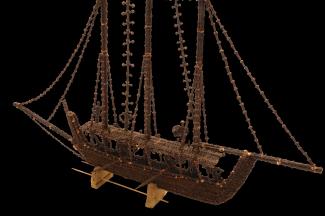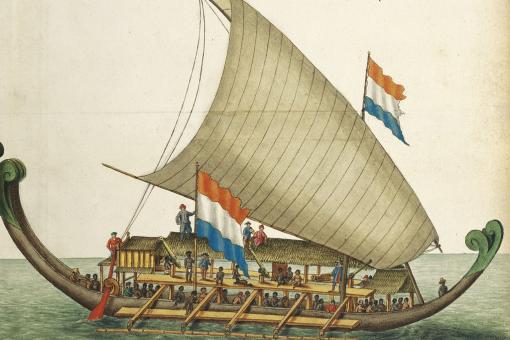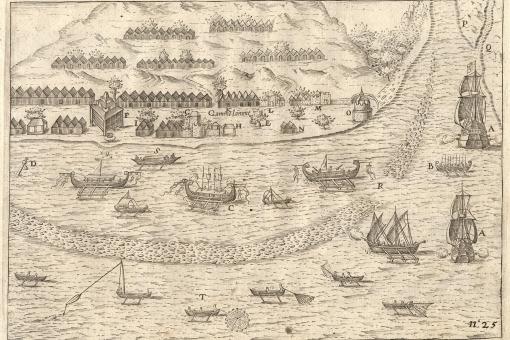Model boats made from cloves were made to sell to European visitors as souvenirs of the Spice Islands (Indonesia) showing how important crossing the sea was to the spice trade. Cloves (Syzygium caryophyllata) were one of the spices traded long distances by sea from Southeast Asia to China, India and Europe for thousands of years. Cloves were native to only five tiny, volcanic islands in the East Indian Archipelago: Ternate, Matir, Tidore, Makian and Bacan, all belonging to the Maluku Islands or the Moluccas.
This model is made from dried cloves, stitched and glued together. On the deck, you can see oarsmen as well as members of a gamelan (percussion) orchestra. Clove models are stylistic – representing a number of different watercraft – from traditional Indonesian vessels such as the kora kora (Moluccan canoe) to vessels of European design like schooners and pinisi. This model was recently acquired from a deceased estate and is said to have once belonged to Mr Lionel Samson, a nineteenth century Fremantle import merchant.
Hongi-tochten
During the 17th century, the VOC or United Dutch East India Company spice monopoly was enforced in the Moluccas by the hongi-tochten, periodic expeditions of armed kora koras to extirpate unauthorised clove plantations and to carry out punitive measures against those who violated the VOC mandate. The VOC had banned the cultivation of cloves outside Ambon and in exchange for an annual payment, the Sultan of Ternate had agreed to destroy the clove culture in his area. The hongi fleet consisted of dozens of brightly coloured kora koras, between 10 and 30 metres long with outriggers. The large kora koras could carry up to 200 men and were armed. Ambonese oarsmen rowed to the rhythm of one or more drum beaters much like those depicted on this clove boat model.



